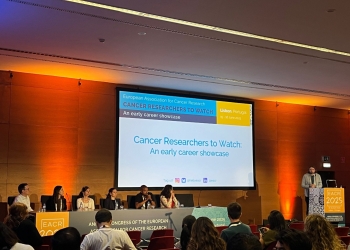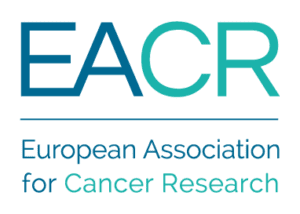The EACR’s ‘Highlights in Cancer Research’ is a regular summary of the most interesting and impactful recent papers in cancer research, curated by the Board of the European Association for Cancer Research (EACR).
The list below appears in no particular order, and the summary information has been provided by the authors unless otherwise indicated.
Use the dropdown menu or ‘Previous’ and ‘Next’ buttons to navigate the list.
6. Tissue memory relies on stem cell priming in distal undamaged areas
Levron, C. L., Watanabe, M., Proserpio, V. et al. Nature Cell Biology. 25: 740–753 (2023).
doi: 10.1038/s41556-023-01120-0.
 Summary of the findings
Summary of the findings
The skin functions as a barrier that senses and adapts to environmental changes while protecting us against mechanical injuries but also from genomic instability triggered by ultraviolet (UV) radiation. Although wound healing and cancer share many hallmarks and individuals with frequent skin injuries/inflammation (i.e. psoriasis or epidermolysis bullosa patients) are more prone to develop skin tumours, the functional connection between epithelial adaptations to skin damage and squamous cell carcinoma (SCC) onset is unknown. A combination of lineage tracing, single-cell transcriptomic and chromatin accessibility assay was used to evaluate the adaptation of multiple epidermal cell populations to wounds and their long-term consequences on the tissue. The authors found that epidermal stem cells acquire a memory of the injury, that allows them to faster respond to future challenges. In particular, specific memory cells are primed through a transcriptional pre-activation of metabolic- and migration-related genes, led by chromatin de-repression. The impact on the skin is profound from both spatial and temporal perspectives: the memory involves an unexpectedly wide area of cells surrounding the wound and lasts many months, with beneficial but also detrimental consequences. Indeed, the epigenetic adaptations that characterise the memory establish a field cancerization that promotes SCCs onset upon UVB exposure.

Future impact
In our life, we are subjected to injuries and UV rays. The study demonstrates that the memory of an injury increases susceptibility to UV-induced pre-cancerous lesions and SCCs. Future studies to identify druggable targets involved in this process might impact preventive medicine. Indeed, understanding the transcriptional and chromatin adaptations that cause field cancerization, is crucial to decipher the earliest steps of tumorigenesis when pre-neoplastic cells still morphologically resemble “normal” unaffected cells. The knowledge of the molecular mechanisms behind epigenetic field cancerization might offer new strategies of prevention, as well as new classes of biomarkers of cancer risk.
6. Tissue memory relies on stem cell priming in distal undamaged areas
 Summary of the findings
Summary of the findings









